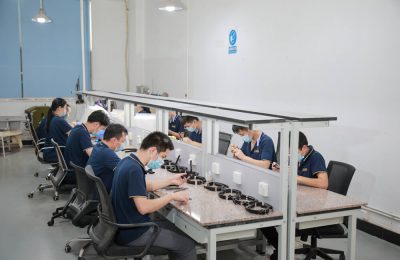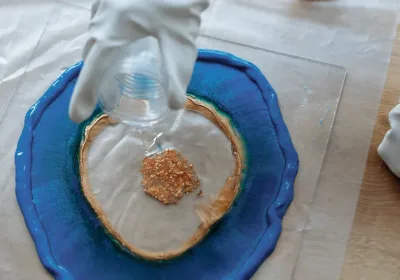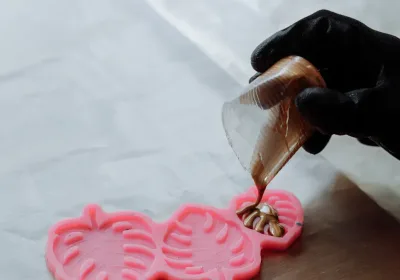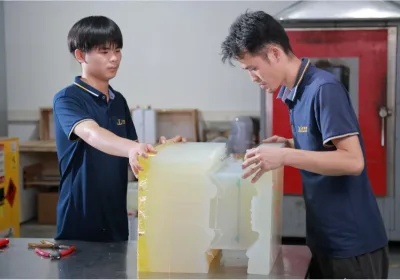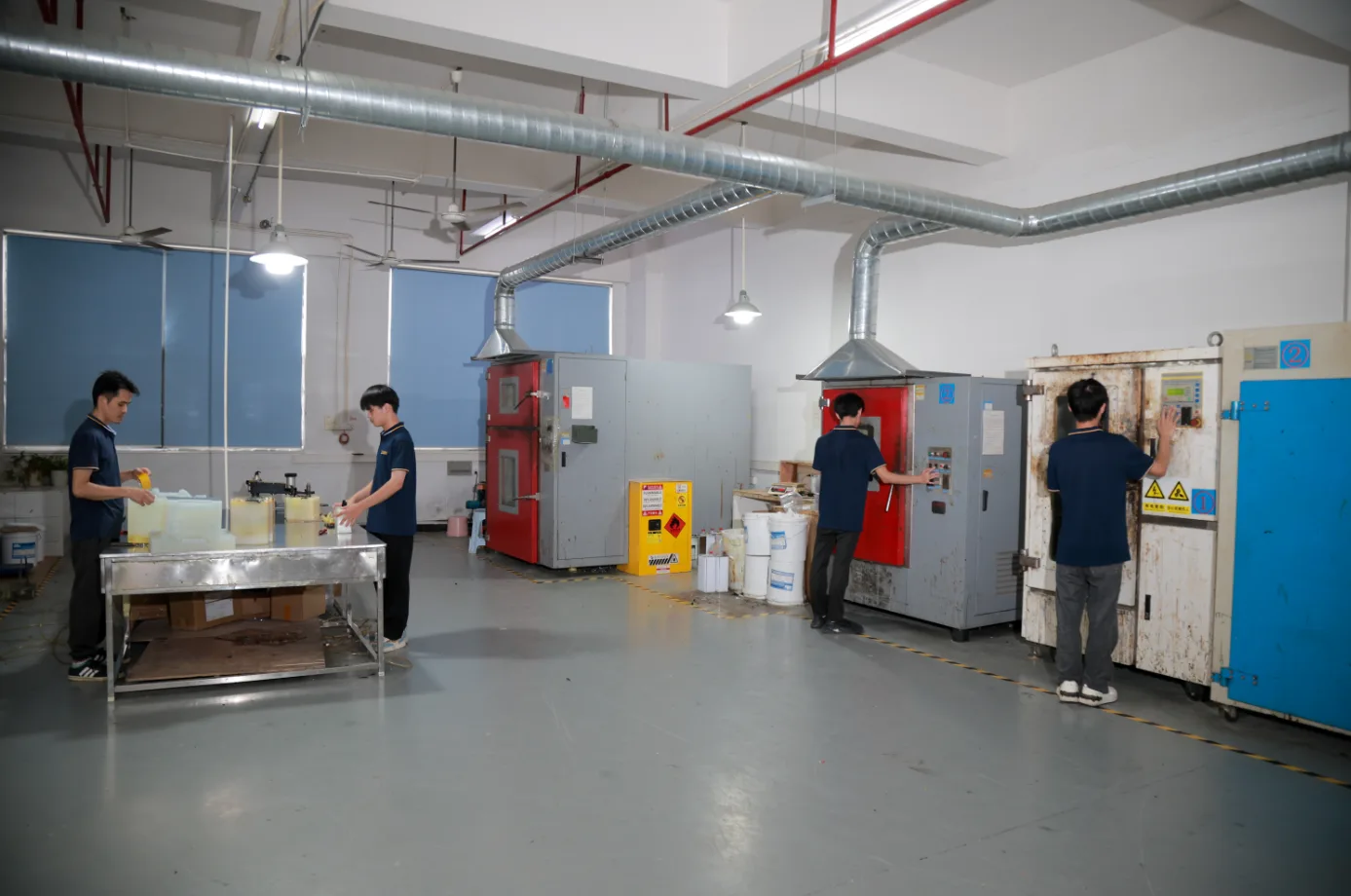
A Vacuum Casting Factory utilizes specialized tools, meticulous processes, and rigorous quality checks to produce exceptional products. These practices enhance efficiency and precision, particularly in industries such as aerospace and automotive.
High-quality materials, including silicone rubbers and metals, ensure reliable casting results.
Advanced machinery like CNC tools and 3D printers accelerates design processes to meet tight deadlines.
Automation through robots and digital technologies minimizes errors and ensures consistent product quality.
By implementing these innovative approaches, a Vacuum Casting Factory delivers highly precise components while maintaining superior standards throughout every stage of production.
Key Takeaways
Good materials like silicone rubbers and resins are important. They help make strong and long-lasting products.
Modern machines, like CNC tools and 3D printers, work fast. Use these tools to save time and work better.
Robots and extra tools lower mistakes and keep quality steady. Add these to make work easier and more accurate.
Careful checks, like testing materials and measuring sizes, keep products top quality. Do these checks to avoid problems and make customers happy.
Improving methods, like using green ideas and studying data, helps factories do better. Focus on smart choices to stay ahead.
Equipment in a Vacuum Casting Factory
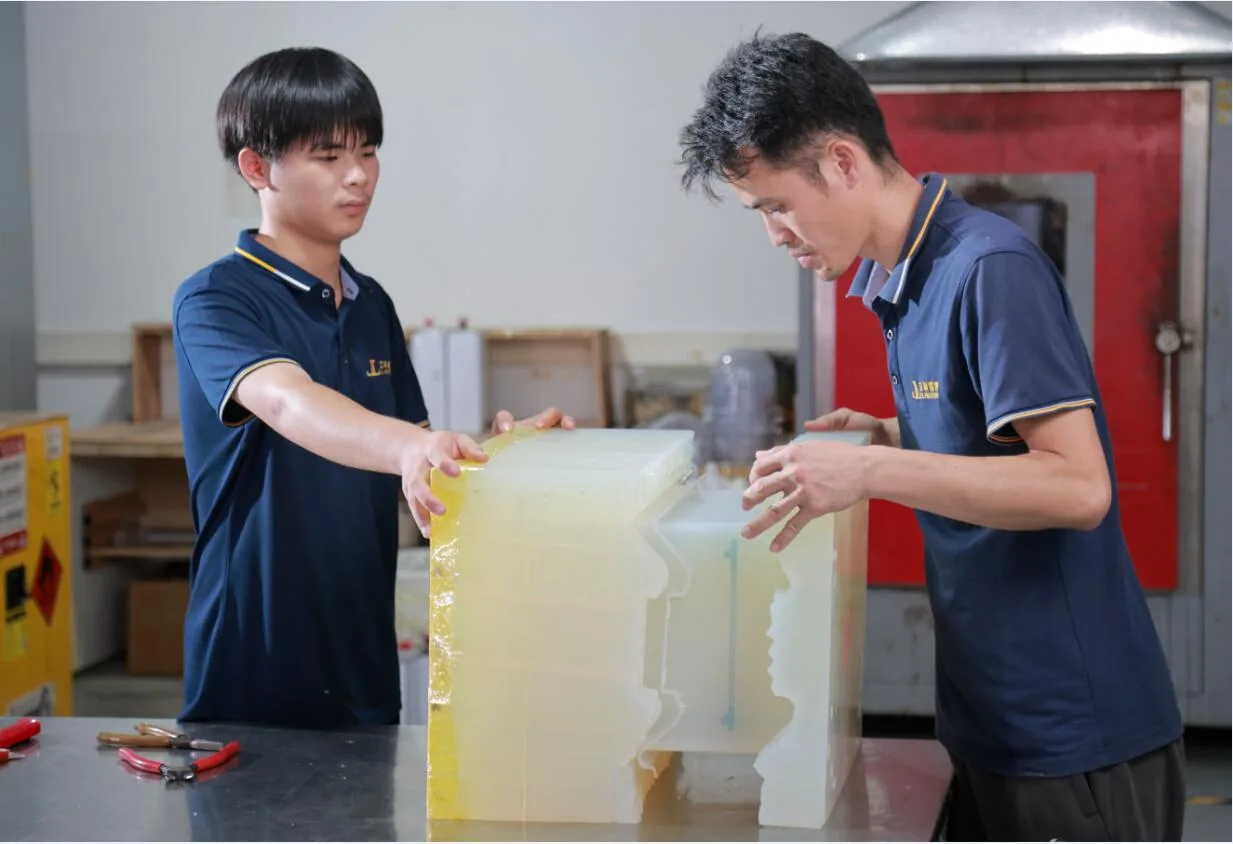
Vacuum Casting Machines
Vacuum casting machines are key tools in these factories. They remove air from the chamber to stop bubbles or gaps in the product. Important parts include chambers for removing air, boxes for making molds, and mixers for preparing resin. This setup helps create very accurate parts, with precision usually within ±0.3% for sizes under 100 mm.
These machines work faster and cost less than methods like steel casting or injection molding. Production time is short, often under 15 days from start to finish. This quick process is helpful for industries needing fast prototypes or small batches.
Silicone Molds
Silicone molds are important in vacuum casting. They are strong, flexible, and can copy tiny details from the original model. One mold can usually make 10–20 parts, depending on the material. For top-quality parts, molds are used 10–12 times to keep accuracy.
Silicone molds last a long time without wearing out, making them a smart choice for small production runs. Some advanced silicone molds can be used dozens or even hundreds of times. This makes them very useful for creating parts that are both high-quality and consistent.
Resin Materials
Resins are the main materials used in vacuum casting. They are flexible and can have different strengths for various uses. Engineers test resin reliability with Weibull analysis, which checks how likely it is to fail under stress. A higher Weibull number means the resin is more reliable and consistent.
Resins are also tested to see how they perform over time, including aging tests. This helps factories pick the best materials for their products. By using high-quality resins, factories can make parts that meet strict design and performance needs.
Auxiliary Tools
Auxiliary tools are very important in vacuum casting factories. They help make production faster and keep quality steady at every step. While main machines do the big jobs, these tools assist and improve the process. This makes them essential for professional factories.
Key Auxiliary Tools and Their Benefits
Auxiliary tools boost accuracy, cut waste, and make upkeep easier. The table below shows some key tools and how they help production:
Auxiliary Tool | How It Helps Production |
|---|---|
Advanced Metering Pumps | Measures materials exactly and lasts long, even with fillers. |
Degassing Devices | Removes air from materials, improving quality and meeting customer needs. |
Mixing Systems | Cuts material waste and is easy to clean and maintain. |
Dynamic Mixing Device | Handles tricky material mixes with different thicknesses or ratios. |
Visual Interface System | Lets workers watch and control the process to keep quality steady. |
These tools make work smoother and reduce mistakes. For instance, metering pumps measure materials exactly, keeping products consistent. Degassing devices take out air bubbles, stopping flaws in finished parts. Mixing systems and dynamic mixers handle tough material blends, saving resources and ensuring even results. Visual interface systems let workers check the process live, keeping everything stable and high-quality.
Why Auxiliary Tools Are Important
Auxiliary tools solve specific problems during casting. They help factories finish work quickly without losing quality. By using these tools, vacuum casting factories can work faster and still meet strict quality rules.
Processes in a Vacuum Casting Factory

Master Model Creation
The first step in vacuum casting is making a master model. This model acts as a guide for the final product. Factories use tools like CNC machines or 3D printers to create it. These tools help make detailed designs with smooth surfaces, which are needed for good results.
To ensure quality, factories use special tests. The Taguchi Method helps pick the best settings for making the model. The Signal-to-Noise Ratio checks how well different designs work. Analysis of Variance (ANOVA) looks at size accuracy and surface smoothness. T-tests compare how rough the surfaces of parts are. These tests make sure the master model meets strict standards.
Statistical Method | Purpose |
|---|---|
Taguchi Method | Finds the best settings for model creation |
Signal to Noise Ratio | Checks how well designs perform |
Analysis of Variance | Tests size accuracy and surface smoothness |
T-test | Compares surface roughness of parts |
By focusing on this step, factories ensure the process starts with a strong foundation.
Mold Preparation
Preparing the mold is very important for good results. First, the master model is placed in a casting box. Risers are added, and liquid silicone is poured in under vacuum. This removes air bubbles that could ruin the mold.
After the silicone hardens in an oven, the mold is cut open to reveal the shape inside. A release spray is used to stop sticking and avoid surface problems. Silicone molds are great for copying small details, making them perfect for precise work.
Step | What Happens |
|---|---|
1 | Make a high-quality master model for accurate parts. |
2 | Place the model in a box, add risers, and pour silicone under vacuum. |
3 | Harden the silicone in an oven, then cut it to reveal the mold. |
4 | Use a release spray to prevent sticking and defects. |
5 | Silicone molds copy details well, improving accuracy and reducing errors. |
This careful process ensures the mold is strong and detailed enough for casting.
Vacuum Casting and Pouring
In this step, resin is poured into the silicone mold under vacuum. This removes air pockets, creating smooth and accurate parts. Machines mix the resin in exact amounts to keep the quality consistent.
This method is very precise and can copy tiny details. It works with many materials, so factories can test different options. The parts made have smooth finishes that look professional and work well.
Precision: Copies small details with accuracy like traditional methods.
Material Versatility: Works with many materials for testing during prototyping.
High-Quality Surface Finishes: Creates smooth, polished parts that look and function great.
By using advanced tools and careful methods, vacuum casting factories make top-quality parts for modern needs.
Curing and Demolding
Curing and demolding are important steps in vacuum casting. These steps make sure the product is strong, durable, and accurate. After resin is poured into the silicone mold, curing starts. The mold is placed in an oven or controlled space to harden the resin. The time and heat needed depend on the resin type and product design.
To get better results, vacuuming is done before pouring silicone. This removes air bubbles, making curing smoother and improving quality. Studies on silicone molding for soft robots show vacuuming reduces bubbles and improves accuracy.
Evidence Description | Key Findings |
|---|---|
In-vacuum silicone rubber forming process for soft robots | Vacuuming reduces air bubbles and improves molding accuracy and repeatability. |
Improving Cooling Performance of Injection Molding Tool | Vacuum casting shows high repeatability for making small, detailed parts. |
After curing, demolding happens. Workers carefully take the hardened resin out of the mold. Silicone molds are flexible, so products can be removed easily without damage. A release spray used earlier helps prevent sticking or surface flaws.
Curing and demolding ensure the product is precise and high-quality. These steps also make the process reliable for small-batch production.
Post-Processing
Post-processing is the last step in vacuum casting. It improves the product's look and function. Workers trim extra material, sand rough edges, and polish surfaces. These tasks give the product a smooth, professional finish.
For stronger or more durable products, factories may add coatings or treatments. These protect against wear, rust, or weather damage. Sometimes, products are painted or dyed to match specific colors.
Quality checks are very important during post-processing. Workers look for flaws like uneven surfaces or wrong sizes. Special tools, like coordinate measuring machines (CMMs), check if the product matches the design.
Post-processing makes the product look better and work as needed. Careful post-processing helps factories deliver high-quality products that meet customer needs.
Quality Control in a Vacuum Casting Factory
Material Testing
Testing materials is very important for making good parts. Factories check how strong, stretchy, and heat-resistant materials are. This helps ensure they work well during production and meet design needs.
Reports explain how tests are done and show the results. These reports are needed to follow strict rules and get certifications. Material certificates, based on EN 10204 standards, give extra proof that materials meet industry rules. This makes sure the materials are high-quality and reliable.
Tip: Testing materials carefully improves product quality and lowers defects.
Process Monitoring
Watching the process closely keeps it accurate and steady. Sensors and software check things like temperature, pressure, and resin flow. This live data helps workers fix problems before they ruin the product.
Many factories use machines to monitor automatically. These systems lower mistakes and keep quality the same for every batch. By tracking each step, factories make sure parts are made with great precision.
Dimensional Accuracy Checks
Dimensional checks confirm parts match the design exactly. Engineers measure how much parts can differ from the planned size. These checks are key to making sure parts meet high standards.
Liquid resin shrinks when it hardens, which can change sizes. Factories adjust mold sizes to fix this. If needed, they use grinding or other methods to make parts the right size. These steps ensure the final product matches the design perfectly.
Note: Checking dimensions is crucial for making precise parts customers want.
Final Product Inspection
Final product checks make sure all parts meet quality rules. Inspectors carefully examine finished items to see if they match designs. Factories use special tools like coordinate measuring machines (CMMs). These tools measure parts very accurately to ensure they meet strict size limits.
Inspectors also look for surface problems like scratches or rough spots. They use their eyes and special tools to find flaws. Magnifying tools help spot tiny issues that are hard to see. This careful checking ensures the product looks good and works well.
Testing how the product works is also very important. Factories recreate real-life conditions to check performance. For example, they test if a part can handle stress or heat. These tests prove the product can do its job as planned.
By doing these detailed checks, factories keep their products high-quality. This step ensures every part sent to customers meets their needs and strict standards.
Continuous Improvement Practices
Improving processes helps vacuum casting factories make better products. These efforts focus on making work faster, cutting waste, and keeping quality steady. Many factories use robots and smart tools to improve accuracy. Automated systems reduce mistakes and make work more consistent.
Factories also care about the environment. They use eco-friendly materials and methods to save energy and reduce waste. For instance, they might recycle materials or use energy-saving machines. These actions help the planet while keeping quality high.
Data is another tool for improvement. Factories study production data to find and fix slow steps. This makes the process smoother and improves product quality.
The table below shows common ways factories improve and their benefits:
Improvement Practice | How It Helps |
|---|---|
Using robots and smart tools | Makes work faster and more accurate. |
Choosing eco-friendly materials and methods | Saves energy and reduces waste, helping the environment. |
Studying production data | Fixes slow steps and improves product quality. |
By using these methods, factories get better at what they do. They keep making high-quality products that customers can trust.
A professional vacuum casting factory uses special tools and methods. These help make high-quality parts with great accuracy. Careful casting steps ensure the same results every time. Advanced machines and techniques improve speed and precision. Quality checks, like watching the process and measuring sizes, keep standards high.
These factories are great at making parts for tricky designs. By following top industry practices, they create reliable parts that work well in real life. Their focus on quality and new ideas keeps customers happy and makes them stand out in manufacturing.
FAQ
What is a vacuum casting factory?
A vacuum casting factory makes detailed parts using special vacuum methods. It uses advanced tools like vacuum machines and silicone molds to create prototypes or small batches with great accuracy.
How is vacuum casting different from injection molding?
Vacuum casting uses silicone molds and resin, while injection molding uses metal molds and plastic. Vacuum casting is faster and cheaper for small batches and prototypes.
Which industries use vacuum casting?
Industries like cars, airplanes, and electronics use vacuum casting. It helps make test parts, designs, and small production runs with high quality.
How long does vacuum casting take?
The process takes about 7–15 days. This includes making the model, preparing molds, casting, and finishing the parts.
Why is quality control important in vacuum casting?
Quality control makes sure parts are accurate and work well. It includes testing materials, checking sizes, and inspecting finished parts for top results.
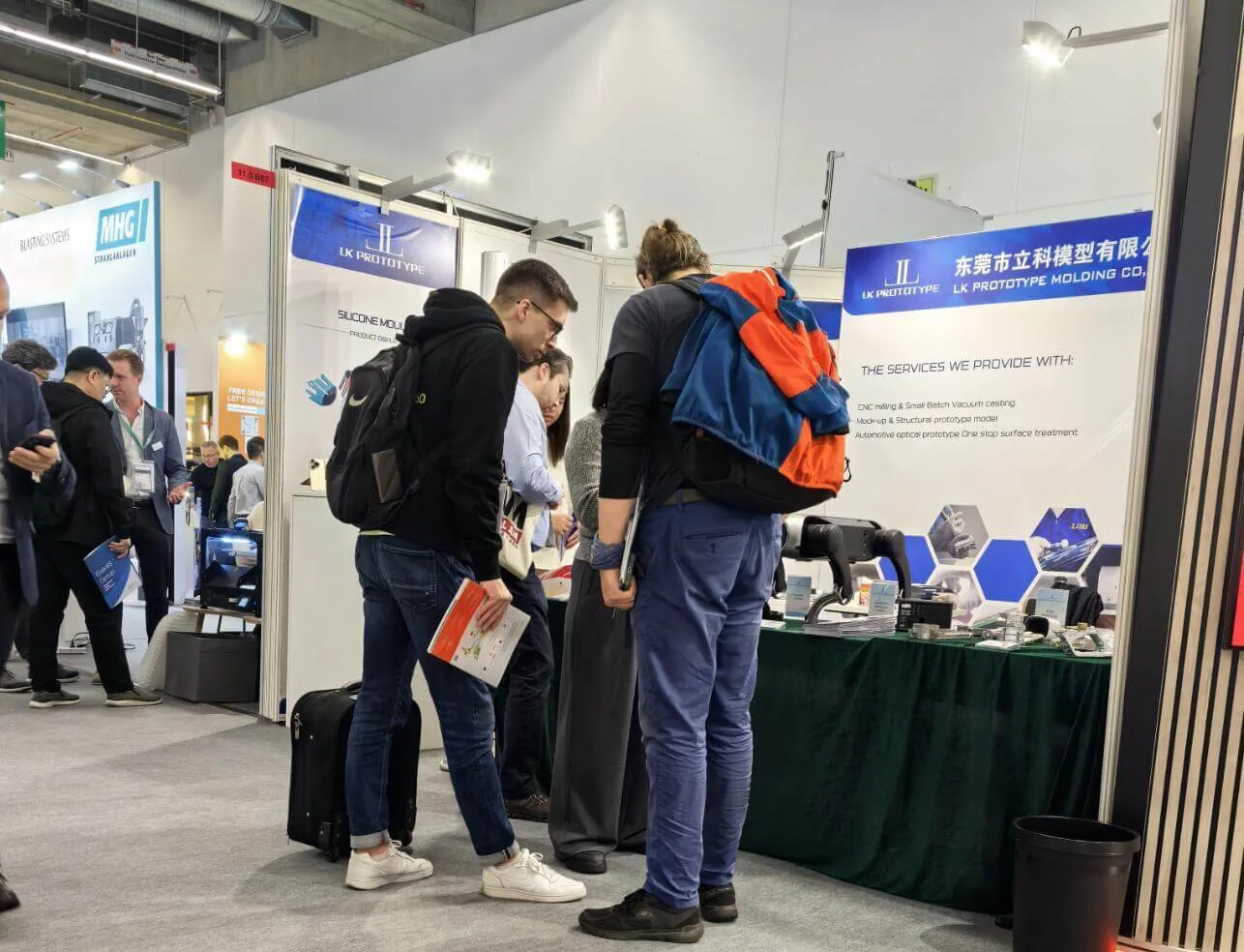
Start your project with LKprototype
LKprototype company simplifies procurement for custom manufacturing, Suitable for making your products or prototypes with a variety of materials, such as metal or plastic, silicone rubber, from 3D Printing to CNC Machined Parts and Urethane Casting Service , with a focus on speed and efficiency. Our platform provides instant quotes. With LKprototype, You can connect with the team to communicate your project to ensure quality and on-time delivery.
Start with an instant quote and experience how our technology and expertise can make custom part procurement faster and easier.
 LKprototype
LKprototype
